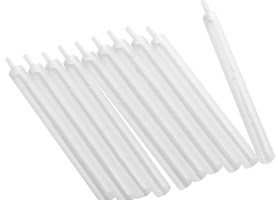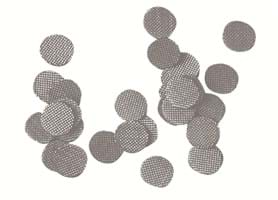Sorptive extraction
Sorptive extraction is an equilibrium process involving interaction between a sorbent and a sample, either by immersion in the sample or through contact in the headspace above the sample. It is commonly used as an alternative to liquid–liquid extraction (LLE) or solid-phase extraction (SPE). Sorptive extraction is a convenient approach for complex samples and for monitoring persistent organic pollutants in foods, beverages and other products derived from natural sources.
Markes HiSorb is a flexible and readily-automated alternative to stir-bar sorptive extraction (SBSE) techniques, such as the Gerstel Twister®
Overview
Sampling trace-level organic compounds in liquid matrices can be challenging and a number of commercial formats have been developed for extraction and enrichment by sorptive extraction. All are coated with sorbent or stationary phase – most commonly polydimethylsiloxane (PDMS).
Sorptive extraction techniques include
- Stir-bar sorptive extraction (SBSE) techniques
- SPME, Thin-film SPME, and SPME Arrow™
HiSorb™ is an innovative, labour-saving sample collection technique for VOCs and SVOCs in liquids and solids. It is far quicker and easier than solvent extraction, and completely avoids the cost of solvent consumption and disposal. HiSorb also offers lower detection limits than conventional SPME, due to the larger capacity of the sorbent and the use of TD preconcentration and automated GC–MS analysis. Sampling involves probes being immersed in liquid or exposed to the headspace of a sample. Empty stainless steel or inert tubes are then used as the carrier tube for analysis in a TD system.
Because it is often not immediately clear which sample preparation techniques for analysis of volatiles will give the best results, automation platforms such as Markes’ Centri have been developed. Centri allows a number of sampling approaches to be used, including:
- HiSorb high-capacity sorptive extraction
- Static headspace and headspace–trap – Versatile sampling from solids and liquids contained in regular headspace vials
- SPME and SPME–trap – Fast and sensitive sample extraction, with a range of fiber types offering analyte selectivity
- Thermal desorption – Using industry-standard tubes to analyse VOCs and SVOCs in air, or released from materials
Benefits of sorptive extraction
- Suitable for immersive or headspace sampling of liquids and solids.
- Time- and cost-saving – less labour-intensive and faster than solvent extraction, with re-usable sampling media for minimised cost per sample.
- Solvent-free, meaning no associated contaminants.















